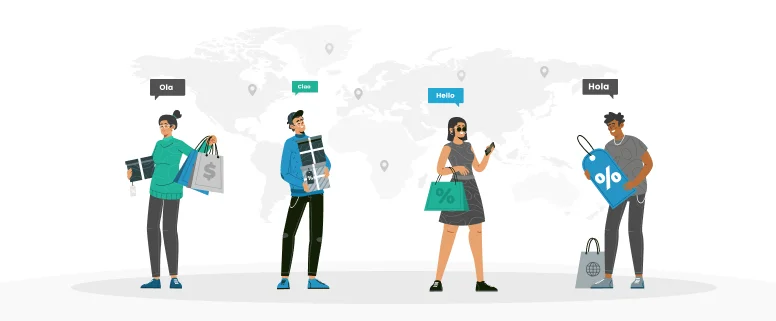The Boom Of Subtitling And Dubbing In The Light Of The Advent Of Netflix
There is no denying the fact that the subtitling and dubbing industry has taken a boom since the advent of online streaming services like Netflix. Consumers have the freedom to watch any show or movie of their choice. And that too in their language of choice.
Netflix is the leading online streaming platform in the world, which makes it the apex among transnational distributors. The language barrier has always been the biggest obstacle for people to communicate across boundaries. But with the access provided by Netflix, people have the first-hand technology to get a peek inside a foreign territory’s culture.
Netflix’s Scalability of Dubbing
One thing that ameliorates the accessibility, is the availability of subtitles and dubbing techniques. According to one report issued back in 2019, Netflix was able to offer audio dubbing and subtleties in more than 30 languages on its platform. And it aims to increase the number and penetrate more foreign markets.
Creating Demand
The strategy adopted by Netflix is to create a demand for foreign content in the audience’s local language. Initially, people used to watch foreign content by using subtitles. Netflix is providing the same service but with more diversity and options.
In order to accomplish the task of providing accurate translations and dubbing, the industry which was once considered obsolete has now been replenished. According to the vice president of Netflix, “…we here at Netflix are trying to revive the lost art of dubbing.”
Quality of Captioning
Netflix-driven boost of the captioning industry has significantly ameliorated the quality of dubbing and subtitles. Currently, the consumption of dubbed foreign content has increased by 120%.
In this endeavor to create impeccable service in the dubbing domain, Netflix has created a new mechanism that allows it to manage things effectively and efficiently.
Timed Text Authoring Lineage
The idea first appeared in the news when a blog was shared by some of the employees working for Netflix. It talked about the new innovation that is being done pertaining to the exchange of script files. It was named TTAL, which stands for “Timed Text Authoring Lineage”.
Process Of Captioning
Moreover, the blog also shared a very important point regarding the process of captioning or dubbing. It is a multifaceted and multi-pronged process that requires significant attention to detail. Meanwhile, if the script files are not properly constructed, they can disrupt the workflow of localization.
Read Also: Subtitles VS. Captions | Do You Know the Difference?
There are two important pieces of information that every script file possess;
- The entire dialogues
- Timecodes for those dialogues
Dubbing Workflow
The above information is essential for the efficient working of subtitle and dubbing workflows. One may ask how the dubbing workflow works. So it’s a very simple process.
Once the dialogue is written in the target language, the person who is dubbing the content will have to integrate the exact time period of the sentence with the original voice.
Netflix has made the choice of working with multiple scripts. Moreover, every script is handled in such a way that they are available in every possible format. For instance;
- PDF Files
- Word
Quality Centric Approach
These strategic maneuvers have made Netflix enhance the quality of its captions and dubbing. One major aspect that differentiates it from the rest of the streaming services, is the variety of languages that it has in its portfolio.
Financing Foreign Movies Into Multiple Languages
Netflix does not prioritize over translating English into other languages. Rather it takes the initiative to finance movies that are made in other foreign languages, such as Swedish. And then introduce them to other audiences. This initiative has introduced a lot of versatile and unique content to the rest of the world.
Netflix’s Competitive Edge
There is no denying the fact that streaming services are overshadowing cinema moviegoers. And it is not just constricted to one geographical area like a cinema house, rather to a global audience.
So what Netflix does is that it initiates contracts with translation firms that mainly specialize in dubbing or captioning movies. Hence, it ameliorates the appeal of the streaming service. And increases revenue plus more customer viewership.
The Aim Behind More Languages
The reason why the membership percentage of Netflix keeps on increasing is due to the language diversity. If there are more language options, there will be more subscribers as well.
Hence, in order to sustain the growth of new subscribers, in the long run, the management at Netflix maintains a constant investment in localizing new content. This strategy has allowed Netflix to offer movies, tv shows, and series in more than twenty-seven languages. And still counting.
English As The Main Reference Script
The main reference script is preferably in the English language. The main principal script is created in the English language. And from there it is translated into other languages.
However, the aim is not just to substitute words from one language for another. But to inculcate the cultural, regional, and linguistic nuances within the dubbing and captioning.
It is the responsibility of the translators to translate content in such a way that it becomes easy for the audience to understand the background of the dialogues. Concurrently, it is also imperative to maintain a certain level of originality from the principle content so that the context does not change. Hence, keeping the original creativity intact is also crucial.
Guidelines For Third Party Contractors
The Quality assurance process of Netflix is of the utmost importance. When it comes to assuring the quality of captions and dubbing, there is a strict guideline mechanism in place that sustains the governance of translations.
Moreover, Netflix always tries to make the process of translation easy for the translators. Hence, utilizes Artificial intelligence and other NPL solutions that aim to establish a robust base for them to start their translation process.
One important thing to note over here is that the third-party contractors are the ones that provide the subtitles or dubbed audio files to Netflix. However, Netflix does provide certain guidelines to these agencies that ensure that the content is efficiently translated. And more importantly, the content is differentiated from original and non-original.
The following are some of the guidelines adopted by Netflix
Duration
Netflix is very clear about the duration of the subtitles. Hence, mentions that there is a standard duration in which the minimum time period and maximum time period are clearly mentioned.
To be exact the minimum period is 5-6th of a second, and the maximum time period is six to seven seconds.
Format
Talking about the format of the files, Netflix accepts those subtitle files that are in the TTML1 format. Moreover, if we specifically talk about translation in the Japanese language then they have to be submitted in the IMSC1.1 format.
Glyph List
If you are unaware of the Glyphs, then it is important for you to know that they constitute the fundamental grammatical structure of the translated language. The list mainly involves punctuation marks, specific numbers of the targeted languages, and currency as well. Moreover, idiomatic phrases and certain vowel intricacies are also crucial to convey the intended message from one language to another.
Conclusion
Netflix has been able to scale itself due to two major markets; Korea and India. However, the diversity of languages in both these states gives more scalability options to the streaming service.
These opportunities embolden the dubbing and captioning markets. And the need for dubbing artists has also increased tremendously. Only time will tell the ultimate scale of the Netflix platform. However, one thing is certain that as long as there is a prevalent diversity of languages, Netflix will keep on expanding its markets, subscriber, viewership, and revenue.





